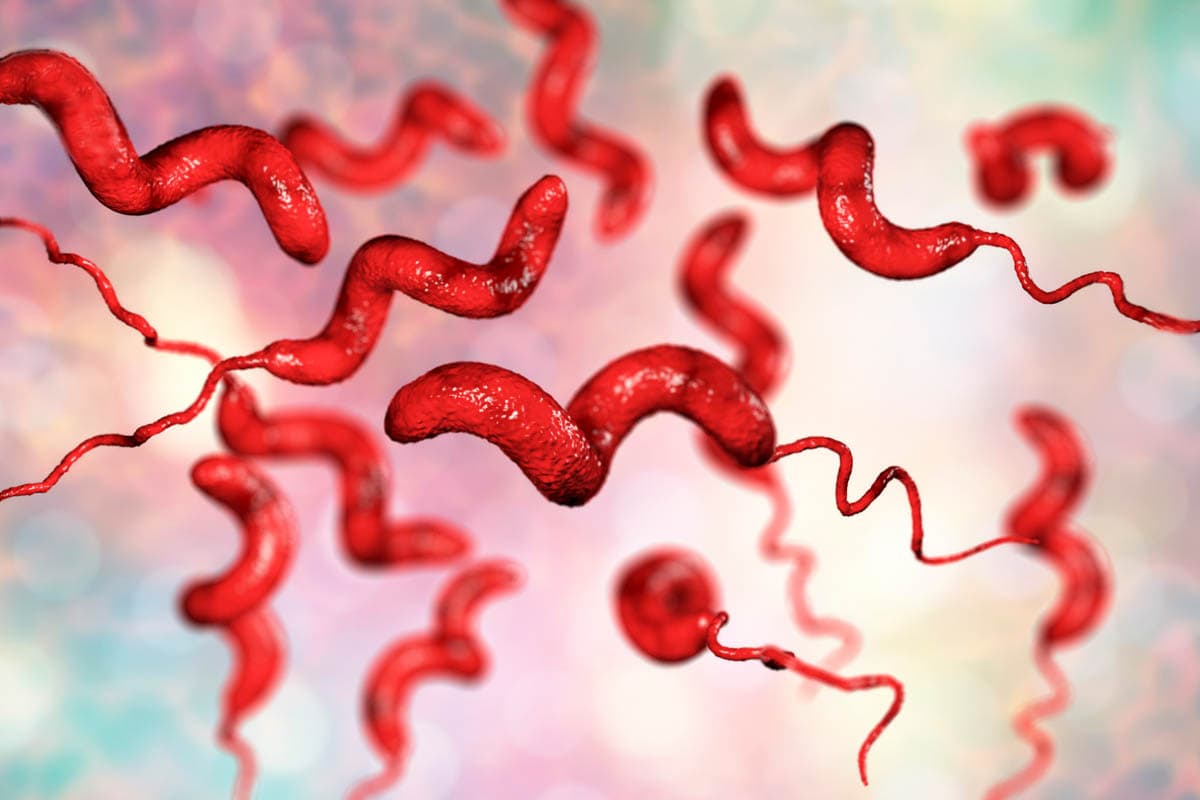At a glanceAbout: Campylobacteriosis is an infection by the Campylobacter jejuni bacterium and is of significance because of its potential to infect humans. Symptoms:
Diagnosis: Baseline tests and fecal culture. Treatment: Antibiotic therapy, as well as supportive care such as fluids to treat dehydration and nutritional support. |
What is campylobacteriosis?
Campylobacteriosis is an infection caused by the Campylobacter jejuni bacterium, which causes inflammation of the small intestine (enteritis) and diarrhea. Kittens, particularly those under six months of age, are most susceptible to infection due to their immature immune systems. The disease is zoonotic, which means it can be passed from cat to human and is one of the leading causes of diarrhea in people. Cats only represent a small proportion of reservoirs of infection to people; undercooked meat is the most common mode of infection in humans. Young children are the most vulnerable to infection.
Many cats can carry the bacteria without showing any outward signs of infection; however, they can still shed the bacteria in their feces. Due to their immature immune systems, kittens are more susceptible to the development of clinical signs than adult cats. Pound cats, stressed cats, pregnant queens, strays, and cats kept in large numbers are also at greater risk.
Transmission
Infection is via the fecal-oral route:
- Accidental ingestion of contaminated feces or feces particles.
- Raw meat, especially chicken, unpasteurised milk can also be a source of infection.
- Contaminated water.
- Fomites (inanimate objects) such as food bowls, litter trays and bedding.
Asymptomatic carriers can transmit the bacteria in their feces for long periods, infecting others.
The severity of campylobacteriosis depends on the age of the cat and the number of bacteria ingested along with the immune status of the affected cat. Kittens whose immune systems are underdeveloped and immunosuppressed cats are at the most significant risk.
Symptoms
The incubation period is between 2-5 days, however, most cats will be asymptomatic.
- Watery diarrhea which may contain mucus or blood
- Abdominal pain
- Tenesmus (cramping and rectal pain)
- Loss of appetite
- Fever
- Vomiting (occasionally)
- Swollen and tender lymph nodes
Symptoms are usually present for 3-7 days. Seek veterinary attention for kittens with diarrhea as they are at risk of dehydration, which can be life-threatening.
Diagnosis
Your veterinarian will perform a physical examination of your cat and obtain a history from you. Diagnosis is based on clinical examination along with diagnostic tests to detect the presence of the bacterium in the feces (fecal culture).
Treatment
Oral antibiotics based on culture and sensitivity
- Fluid therapy to treat dehydration
- A bland diet to rest the stomach while your cat recovers
Isolate the affected cats from other pets to reduce transmission to other pets in the home
Reducing the transmission of C. jejuni in cats and humans
While cats do have the potential to transmit the disease to humans, this is via the fecal-oral route only. Meaning humans acquire the disease via infected feces. You can not catch the disease just from petting or stroking your cat. Wash hands frequently with hot soapy water for a minimum of twenty seconds after handling cats. It is also a good idea (to avoid exposure to many other infections) to get in the habit of NOT putting your fingers in your mouth (nail-biting, chewing, etc.), this is a common route of infection of many pathogens.
- Scoop out litter trays daily, wear rubber gloves when cleaning trays — wash hands after removing rubber gloves.
- Disinfect litter trays and surrounding area at least once a week.
- Undercooked meat is the most common route of infection in people. Cook through and check the temperature with a meat thermometer.
- Avoid drinking unpasteurised milk.
- Wash and disinfect food and water bowls regularly. Change water at least once a day.
- Keep litter trays and food bowls away from each other.
- Wash your hands before and after handling raw meat.
- Use a separate chopping board for meat and vegetables.
Decontamination
The following disinfectants are effective against C. jejuni.
- Bleach (sodium hypochlorite, calcium hypochlorite or sodium dichloroisocyanurate)
- Trifectant or Virkon-Potassium peroxymonosulfate
- F10-Benzalkonium chloride and polyhexanide
- TriGene-Didecyl dimethyl ammonium chloride, benzalkonium chloride, polyhexanide (biguanide)
- Ethanol 70%

